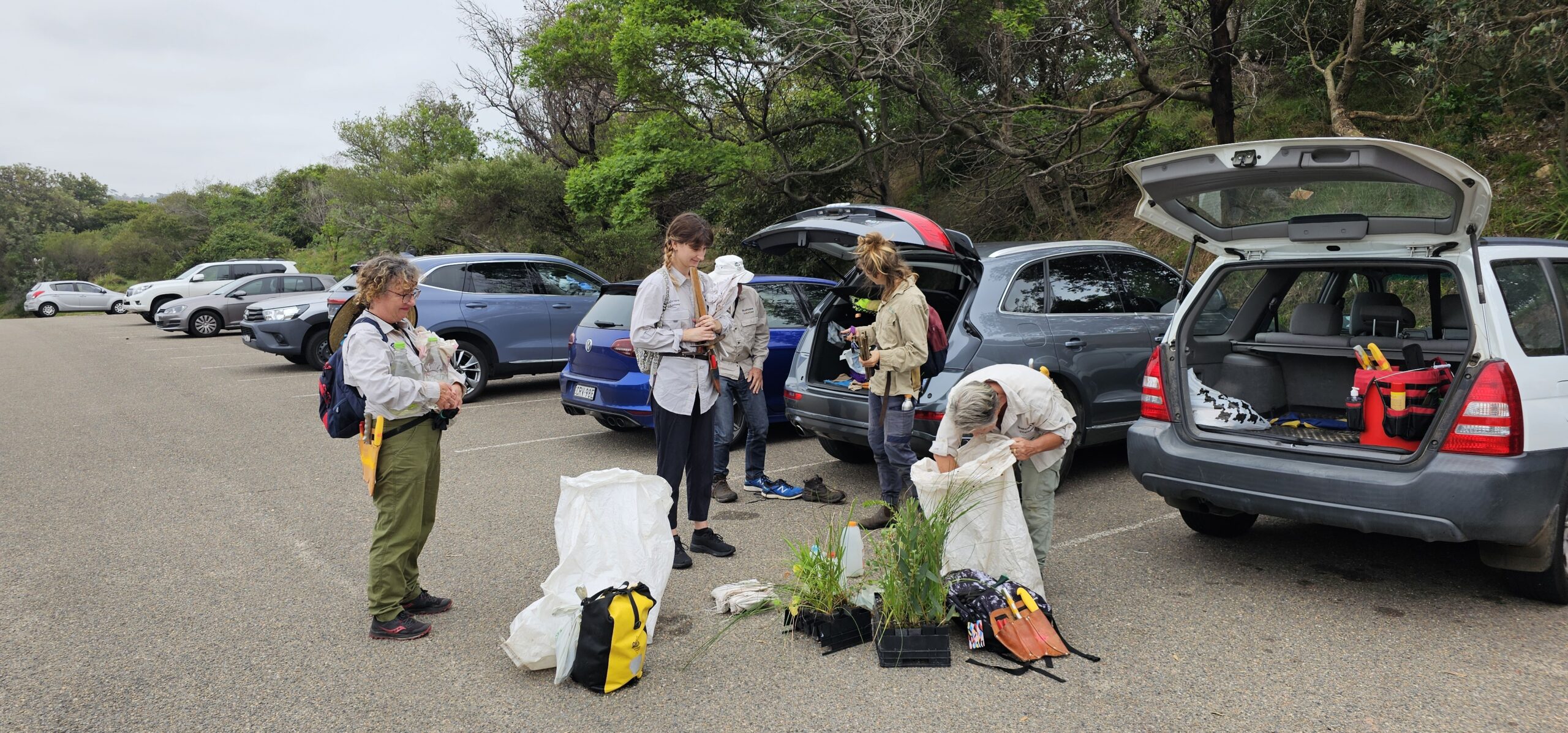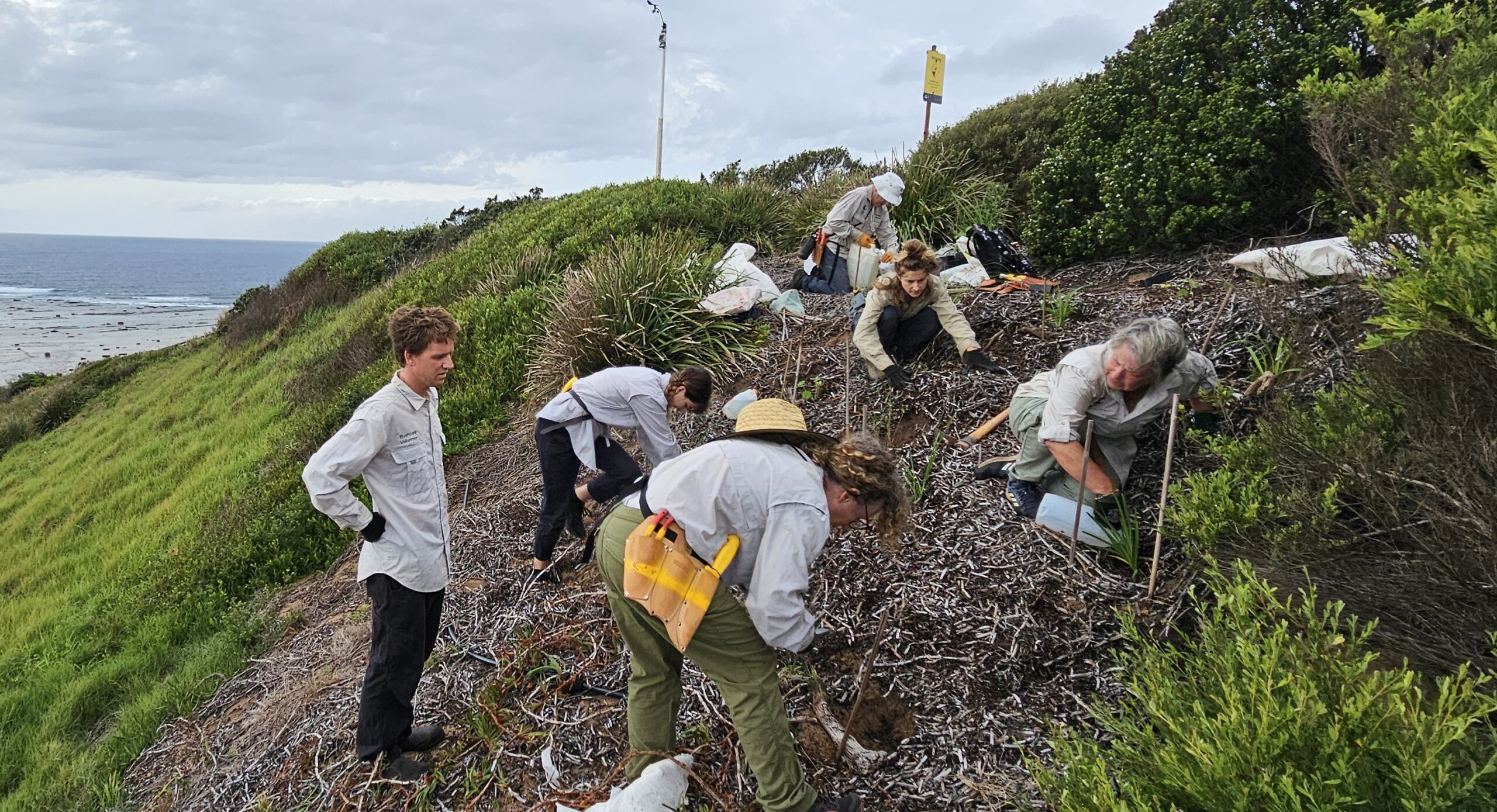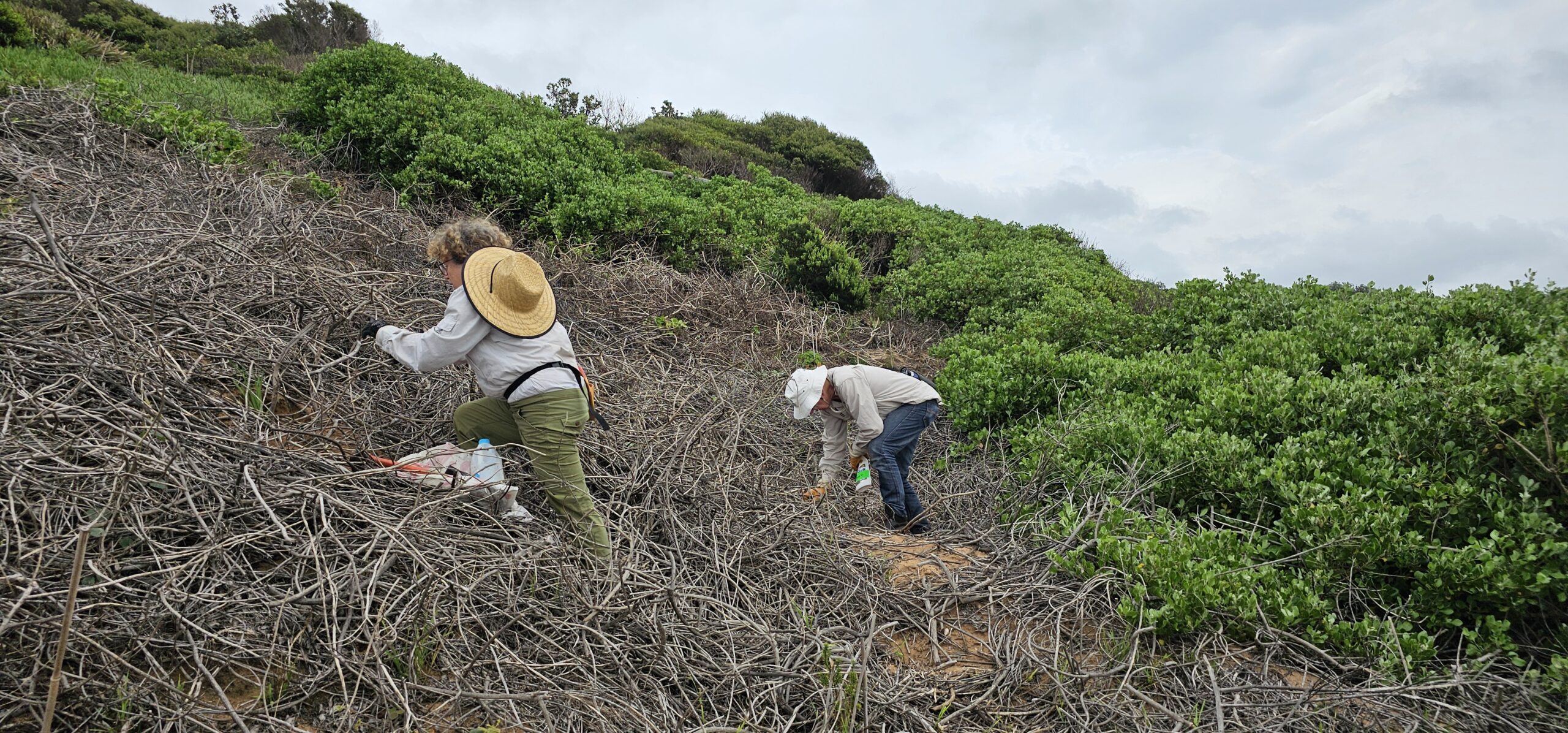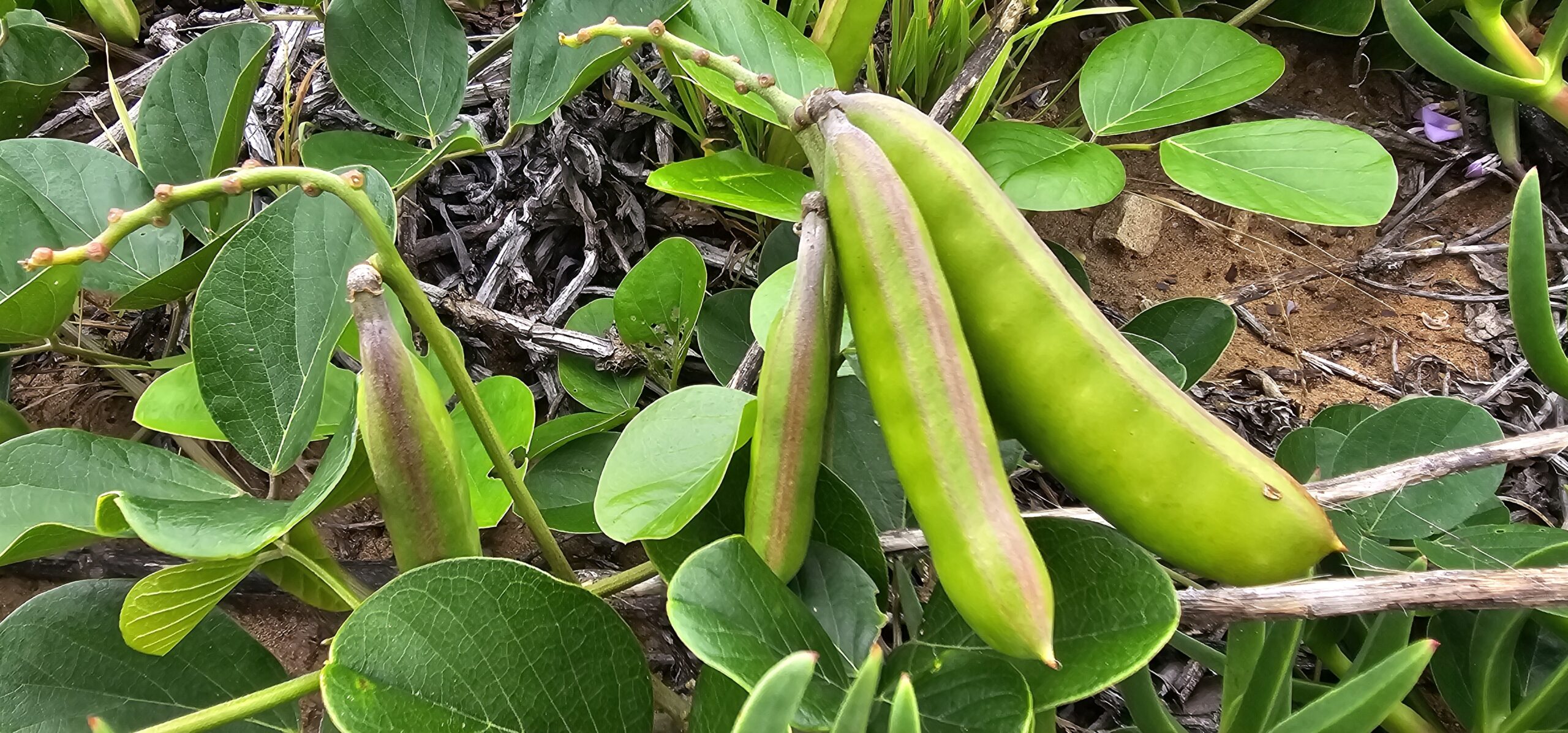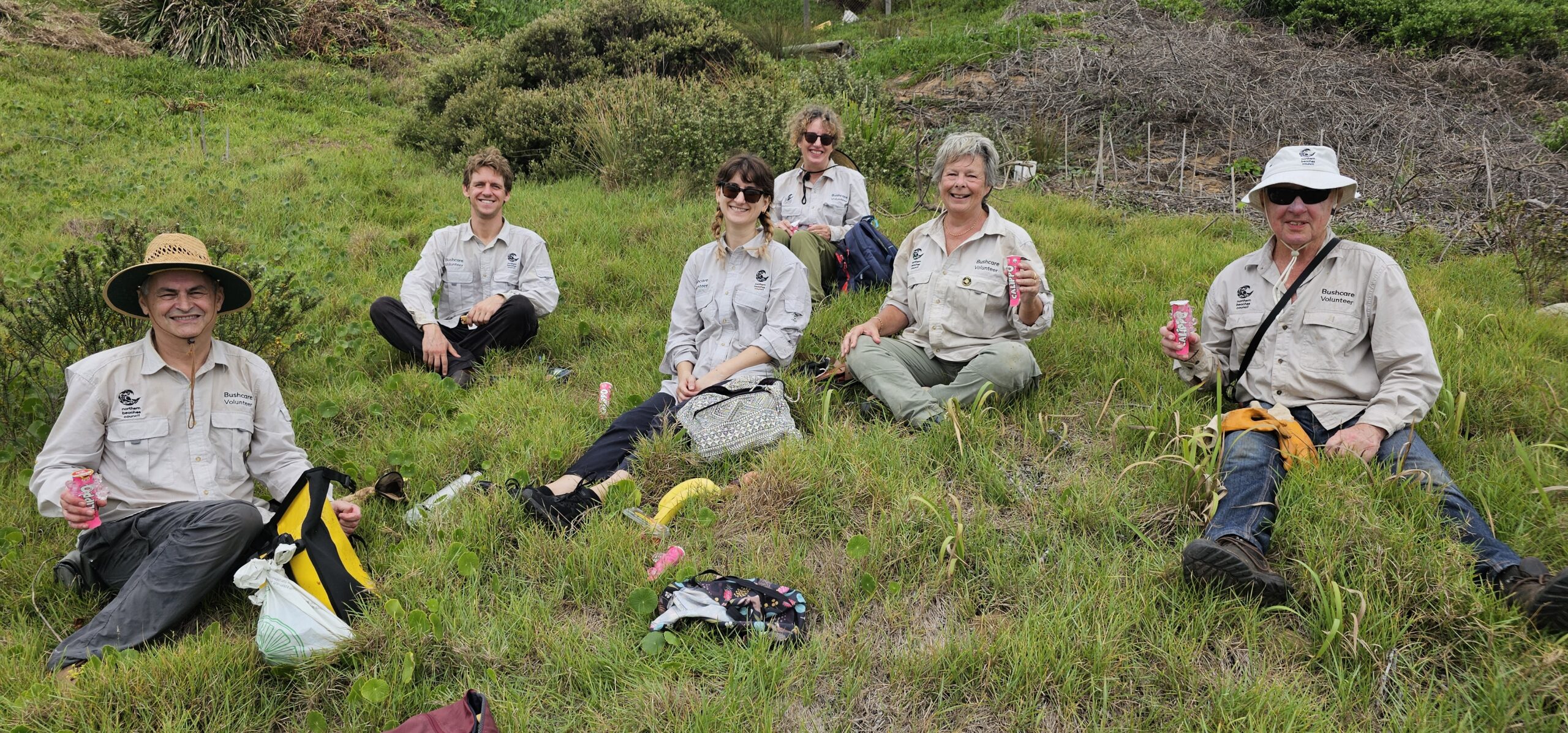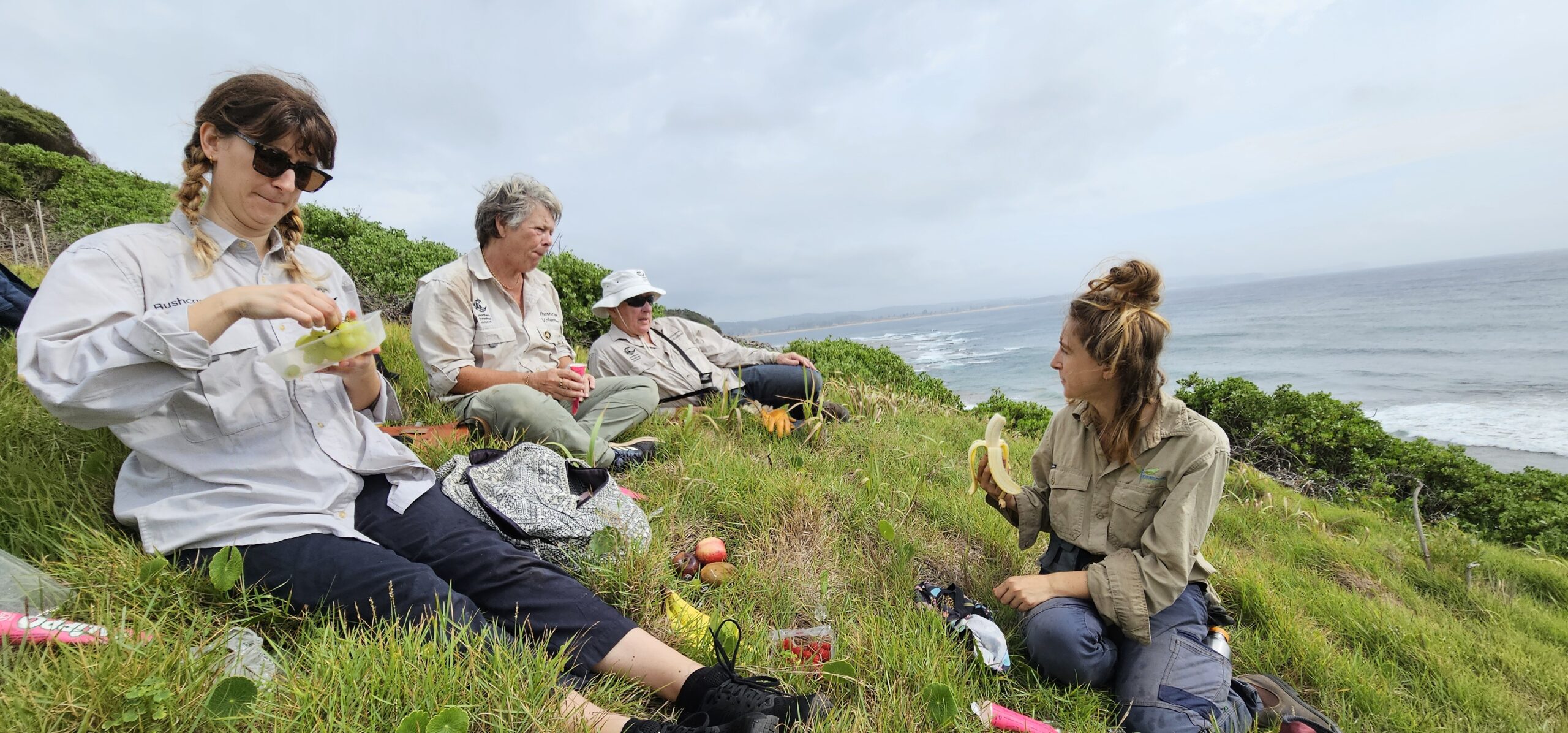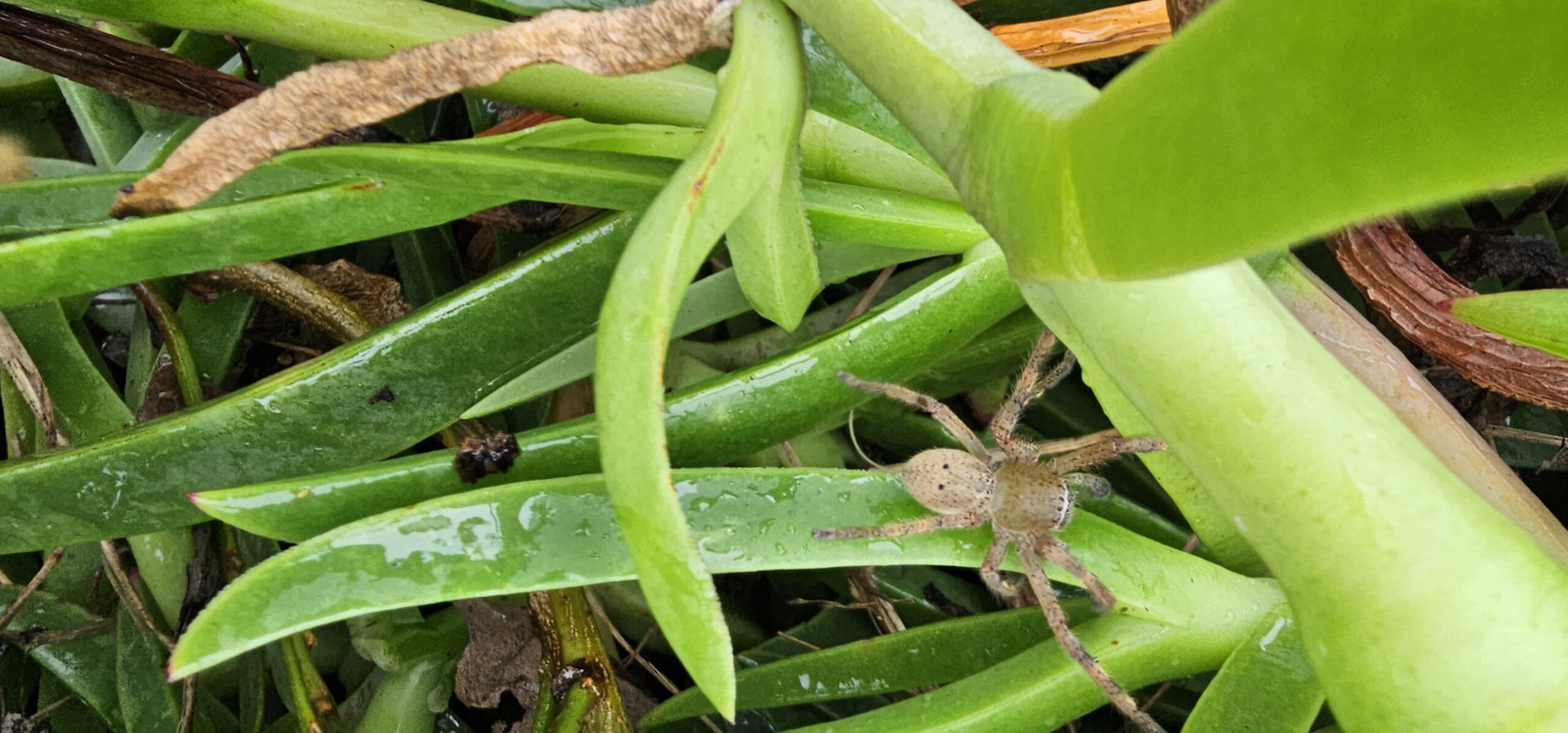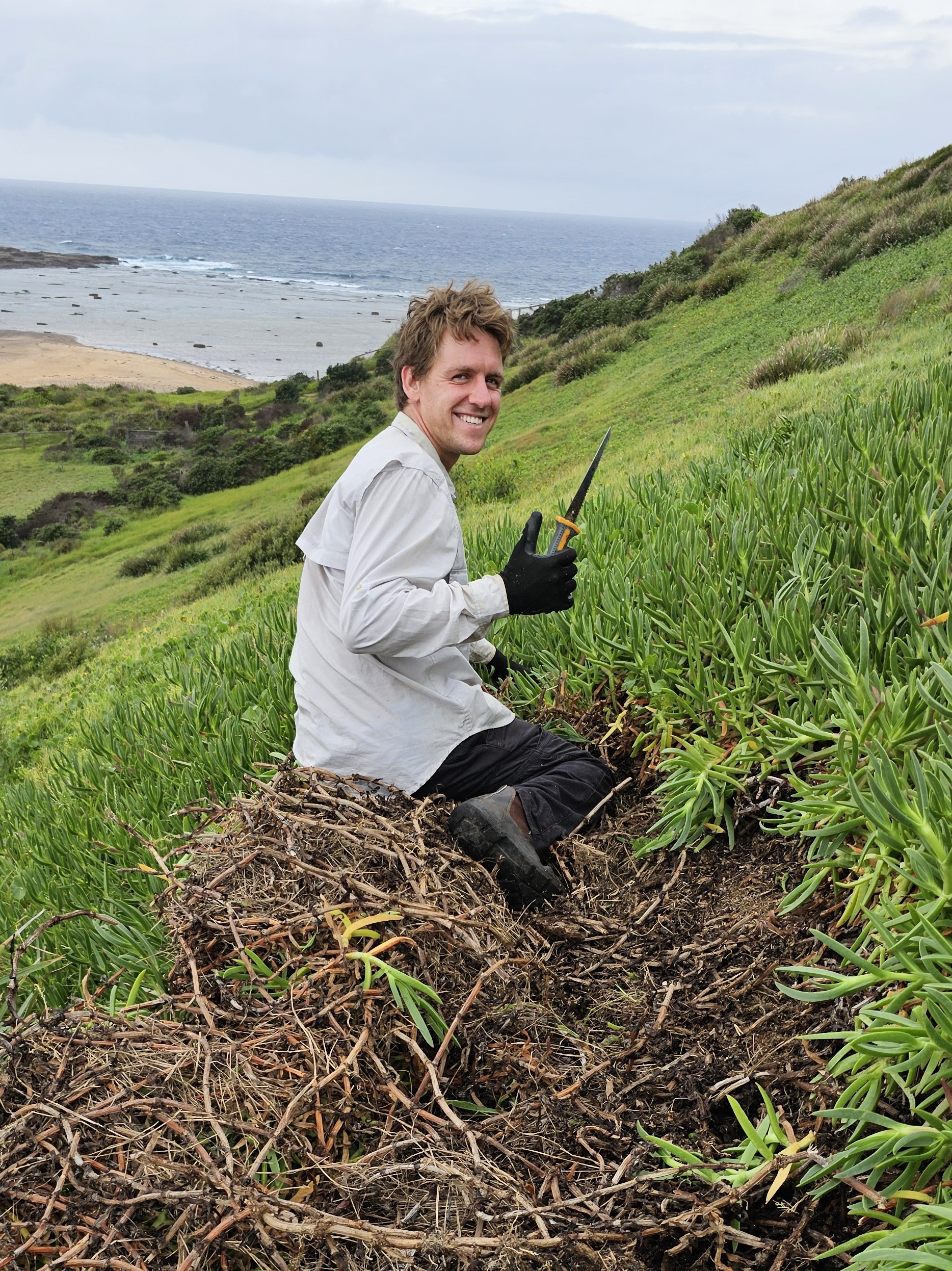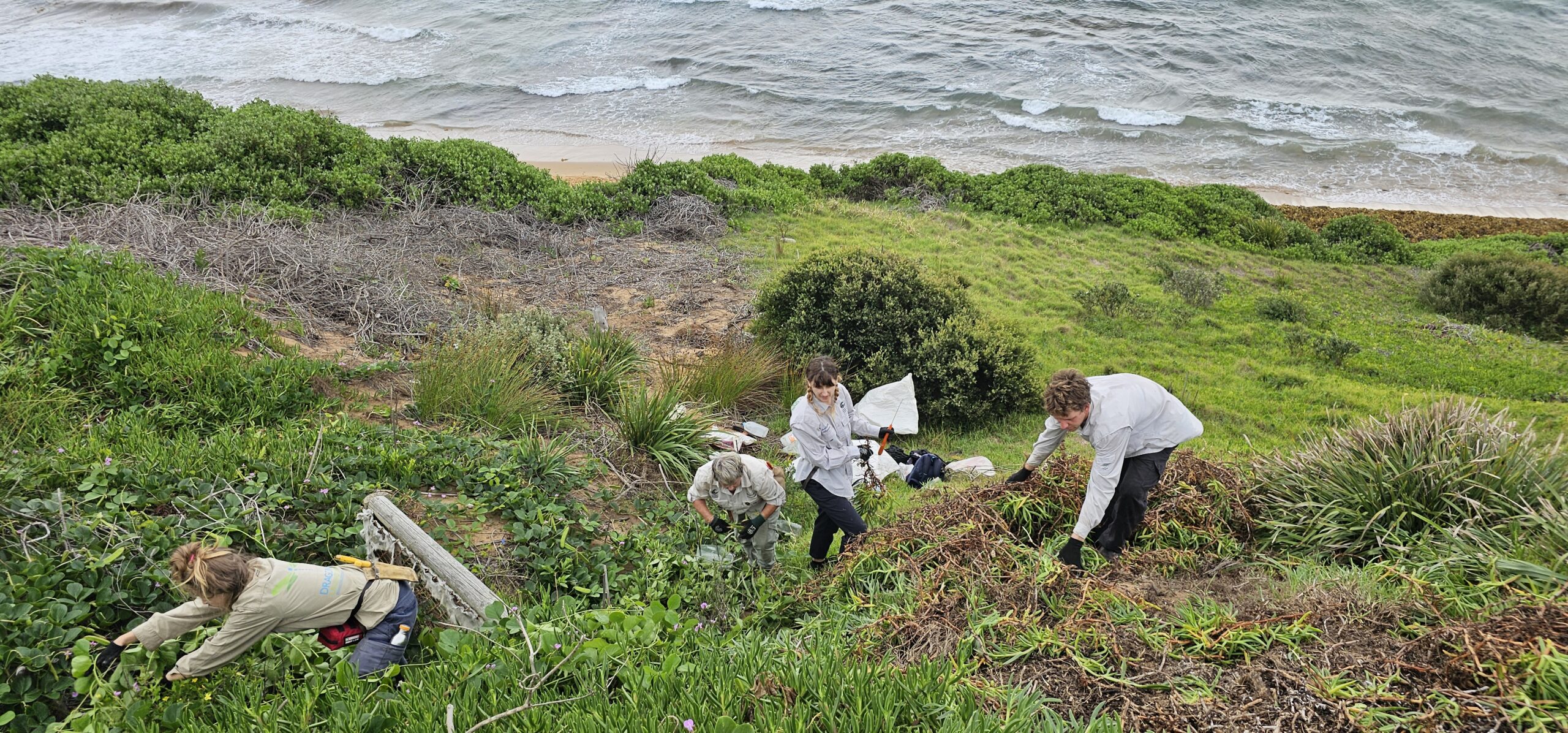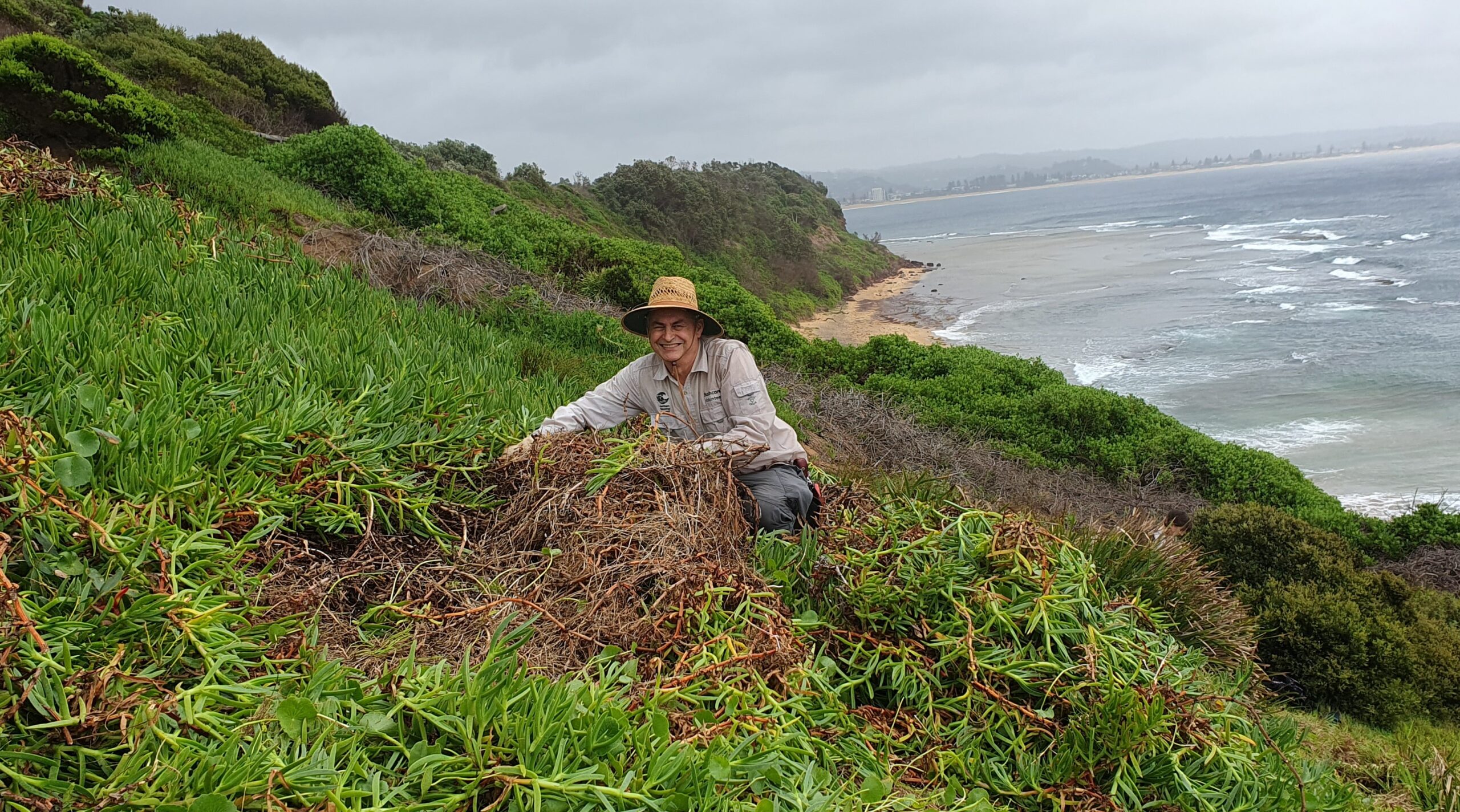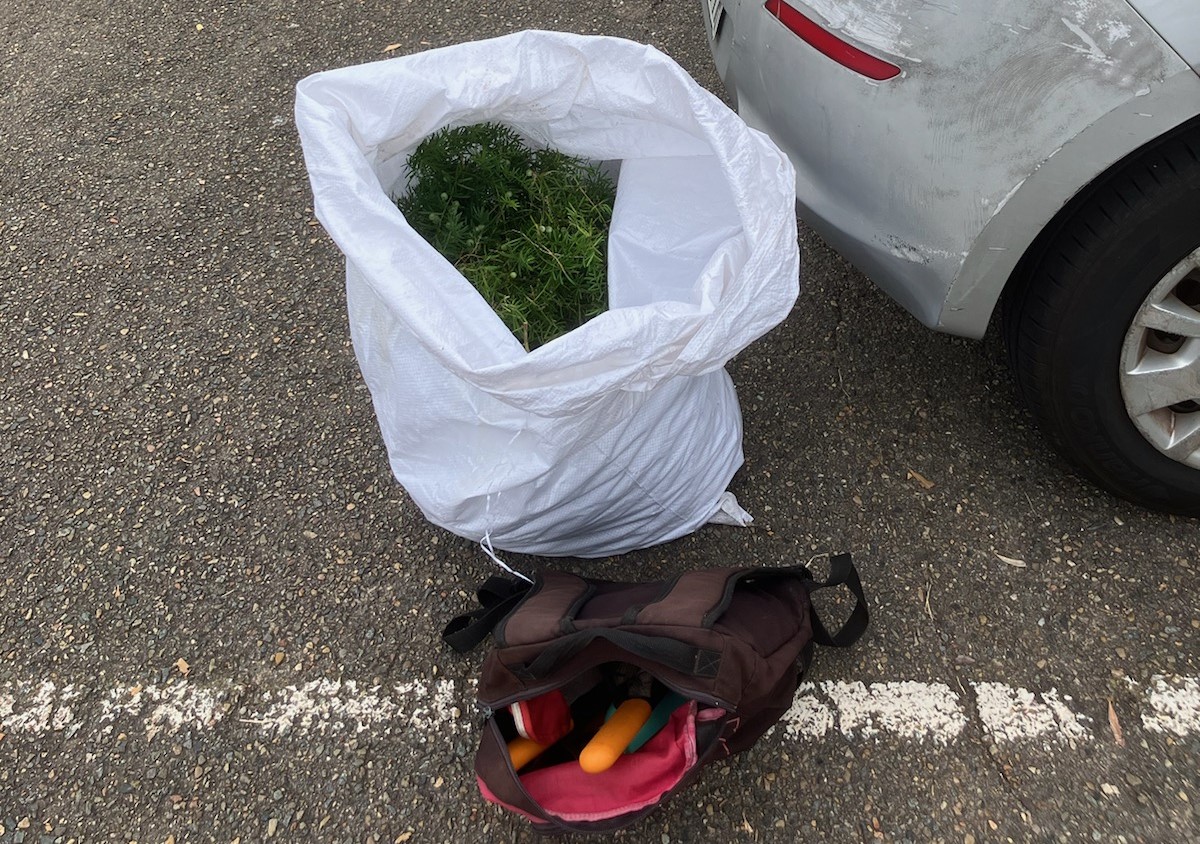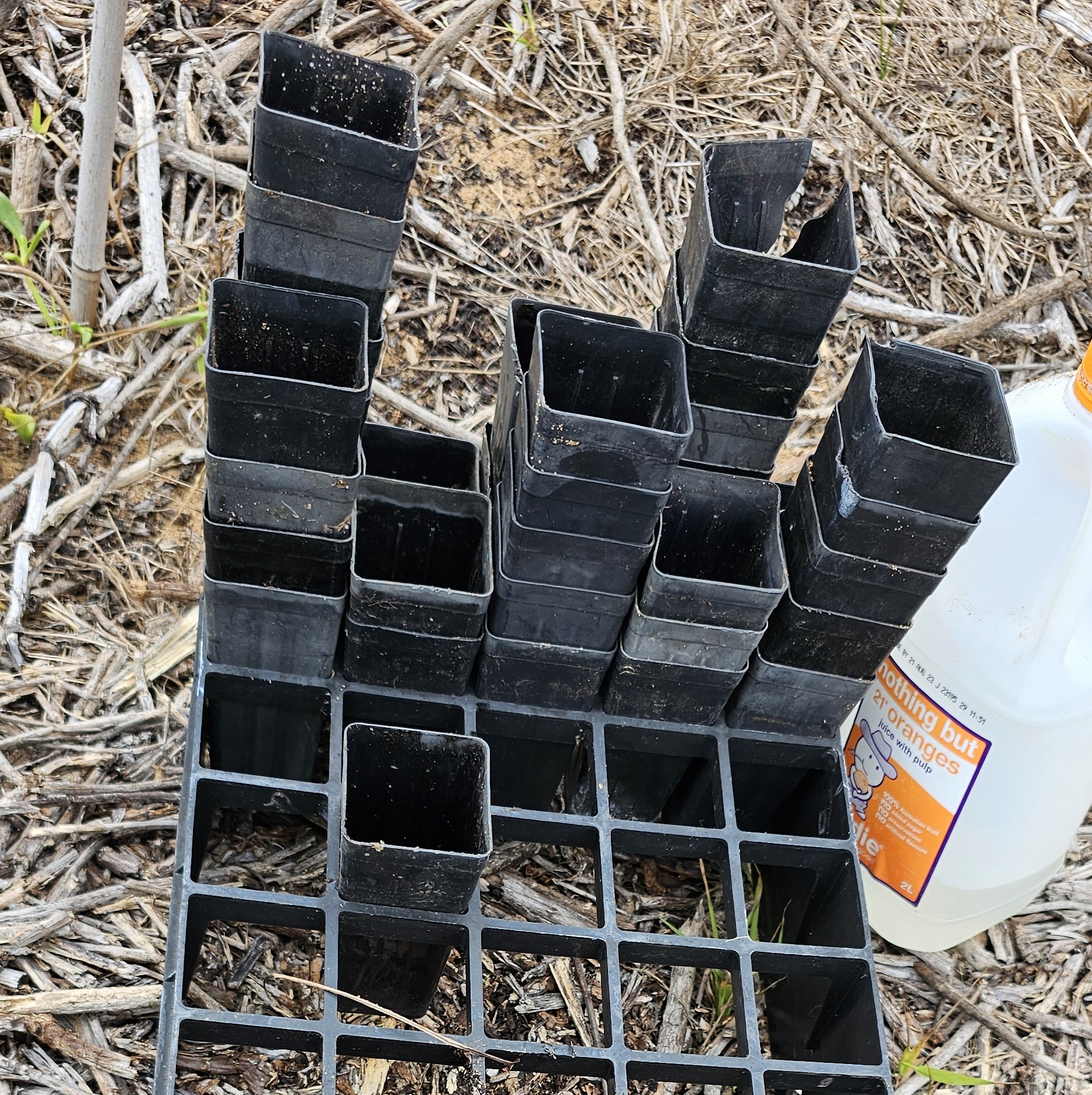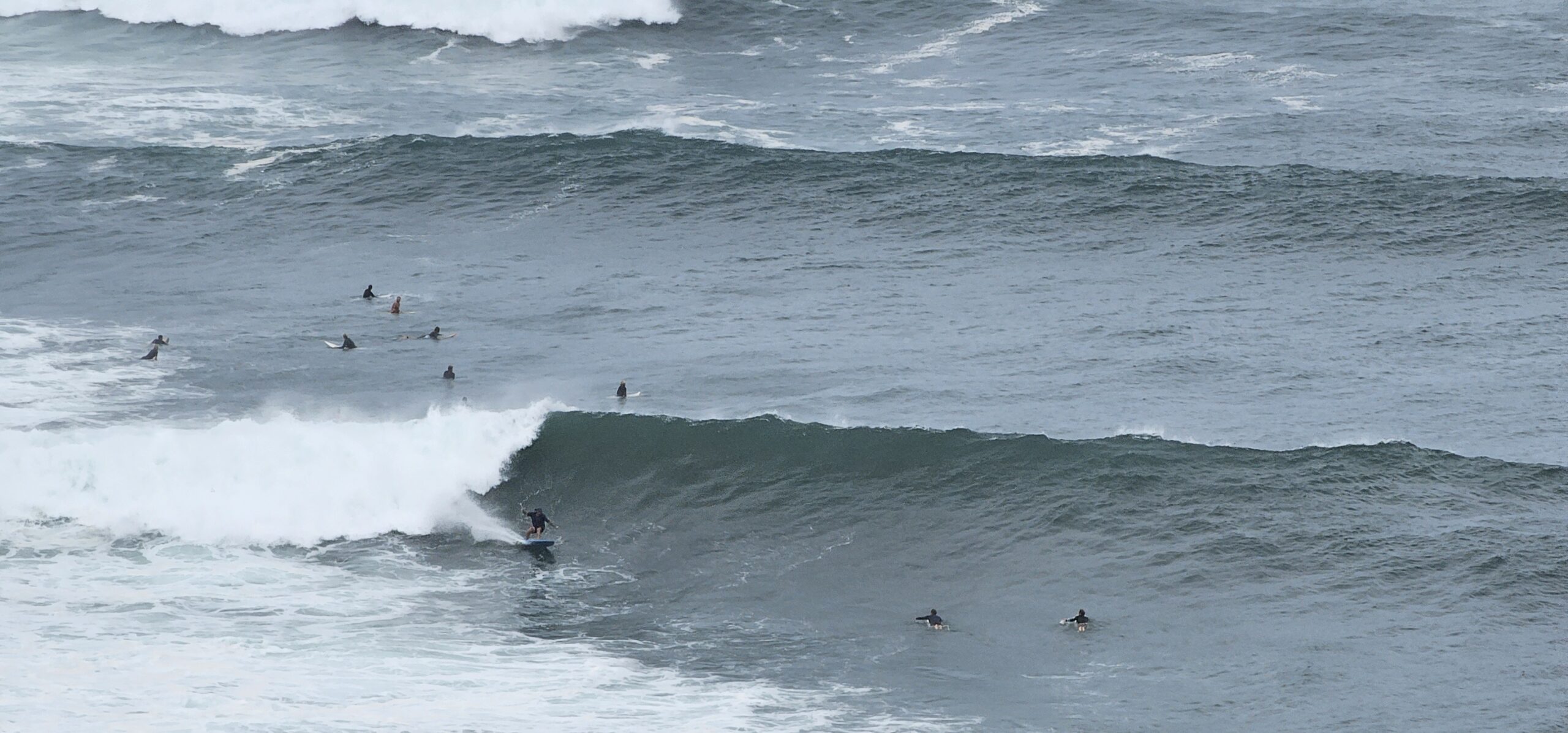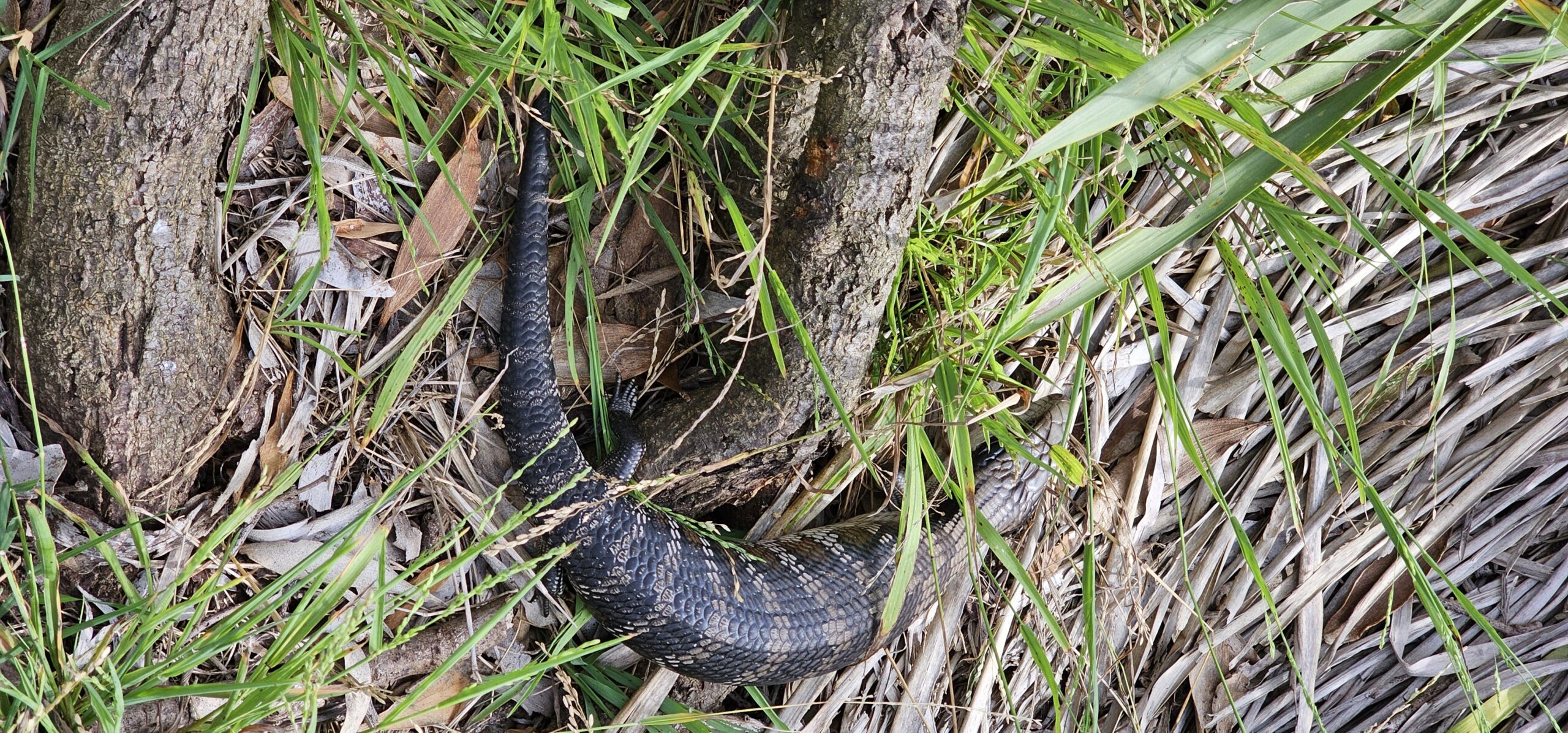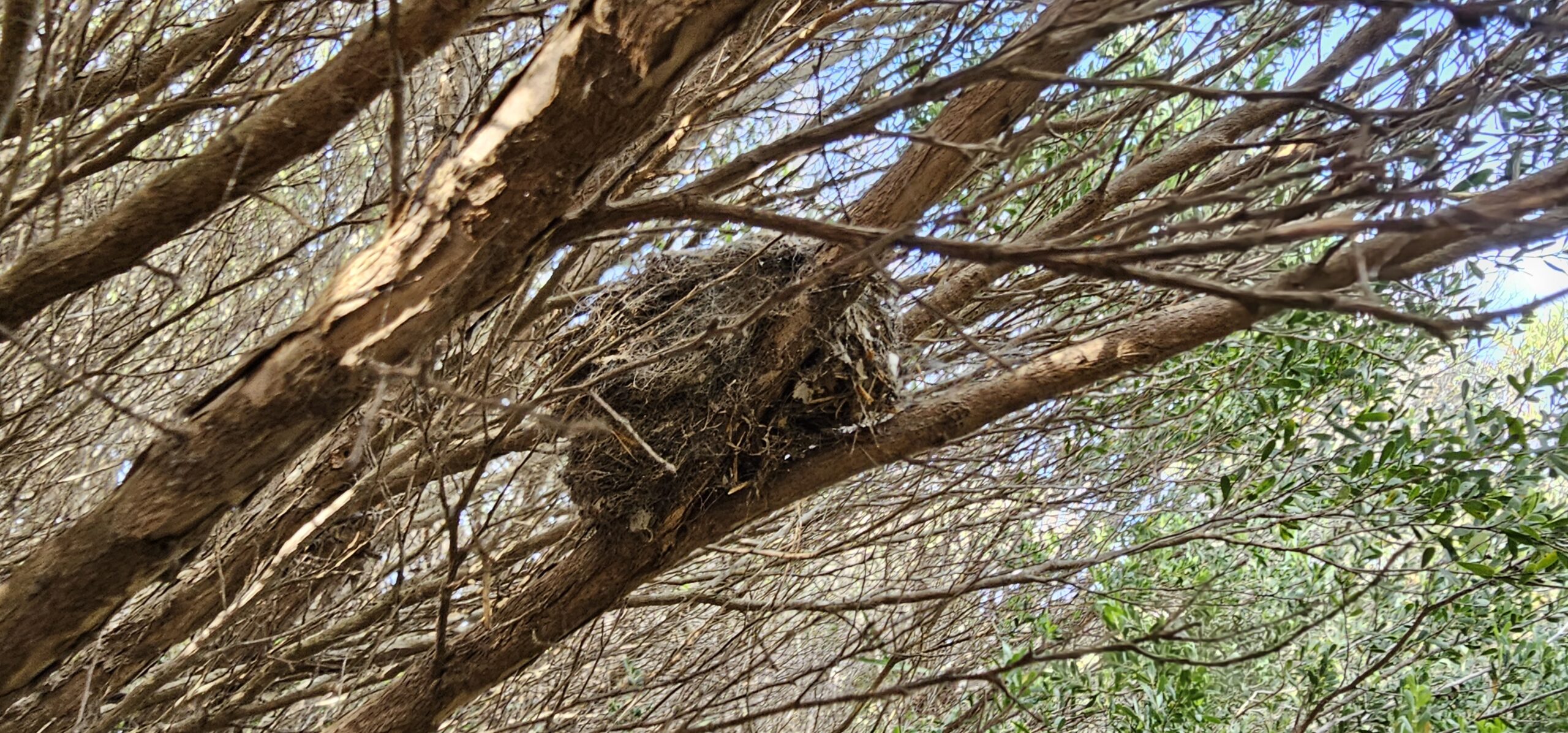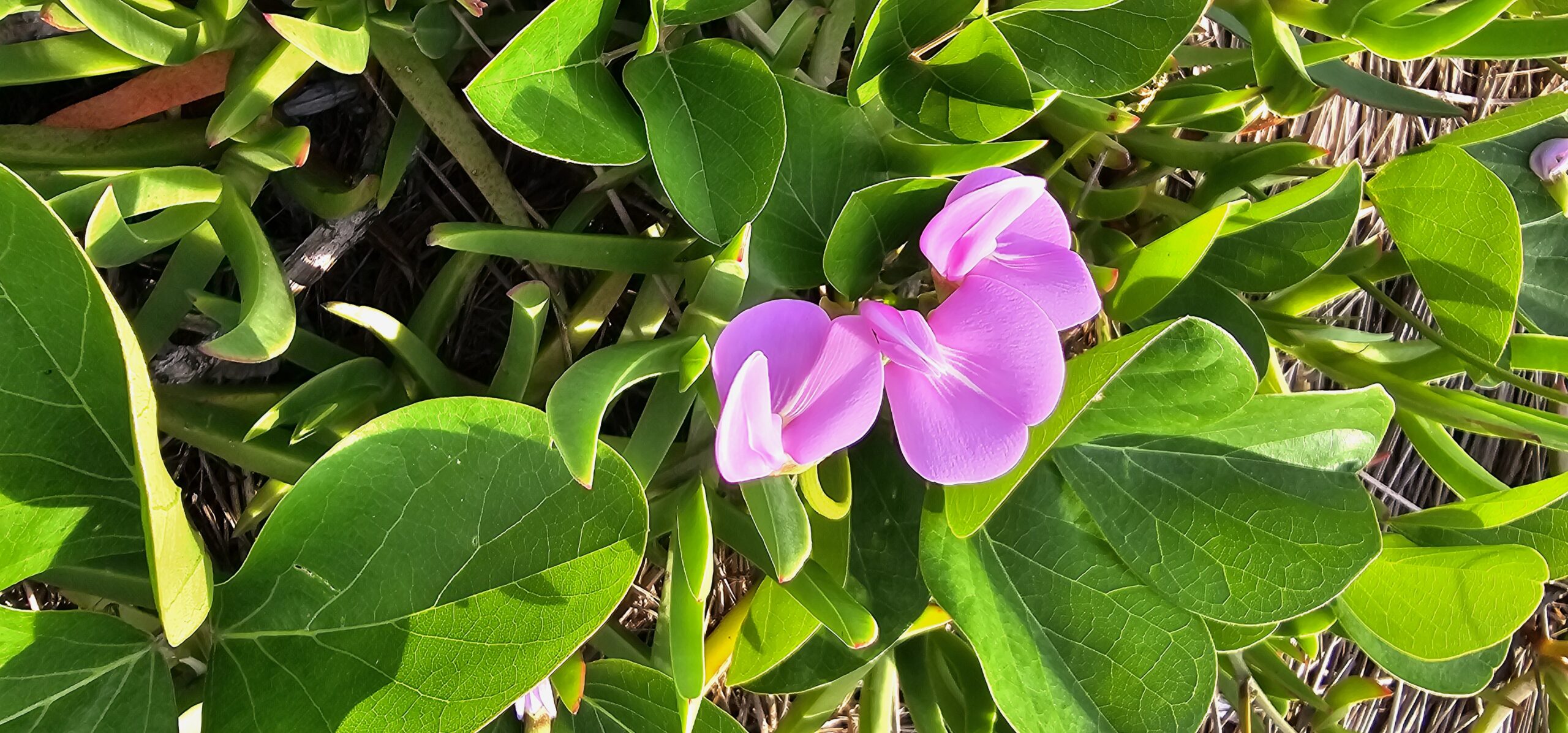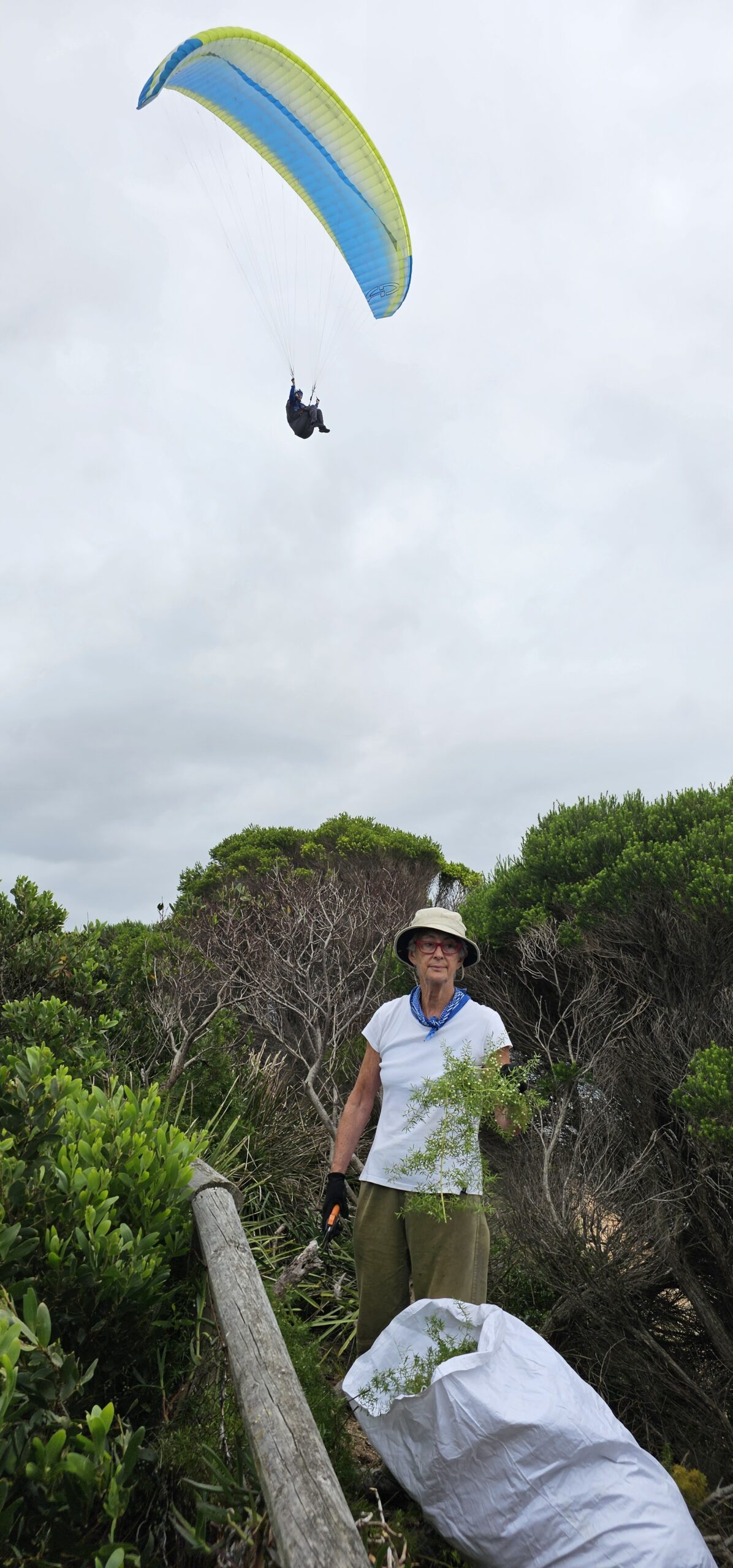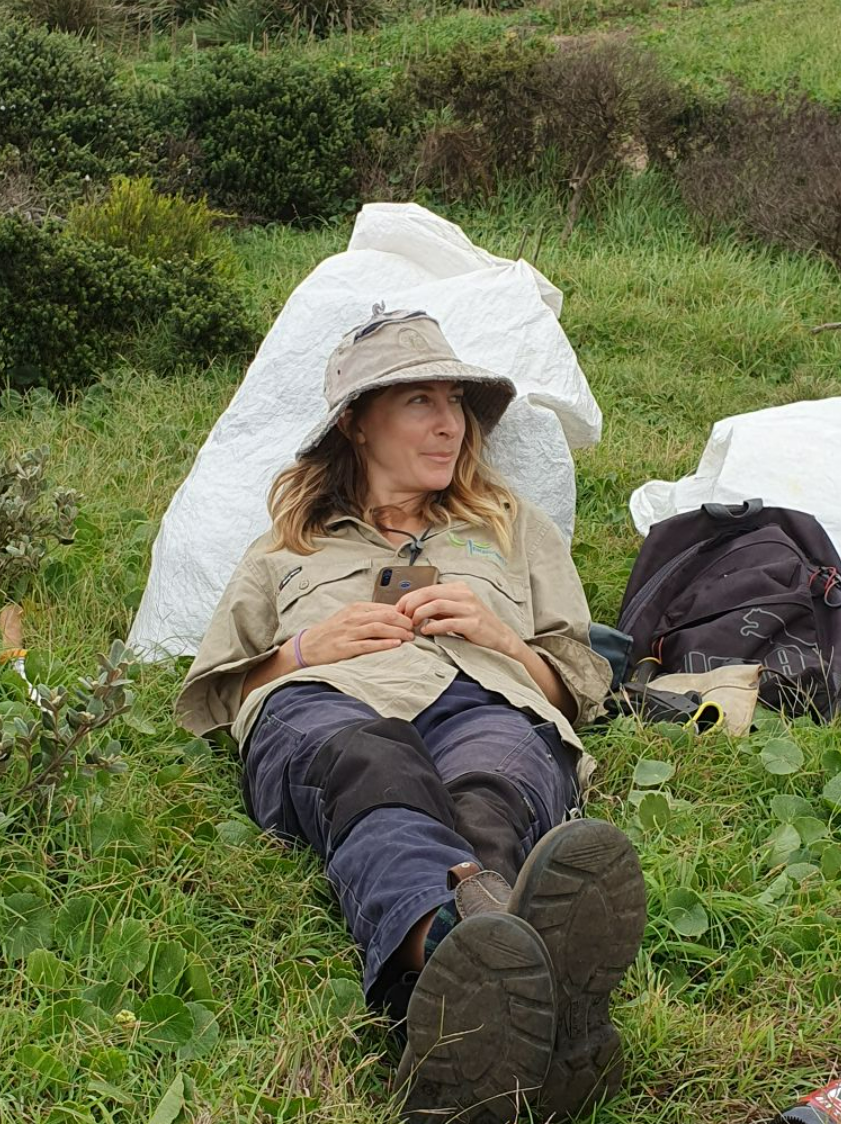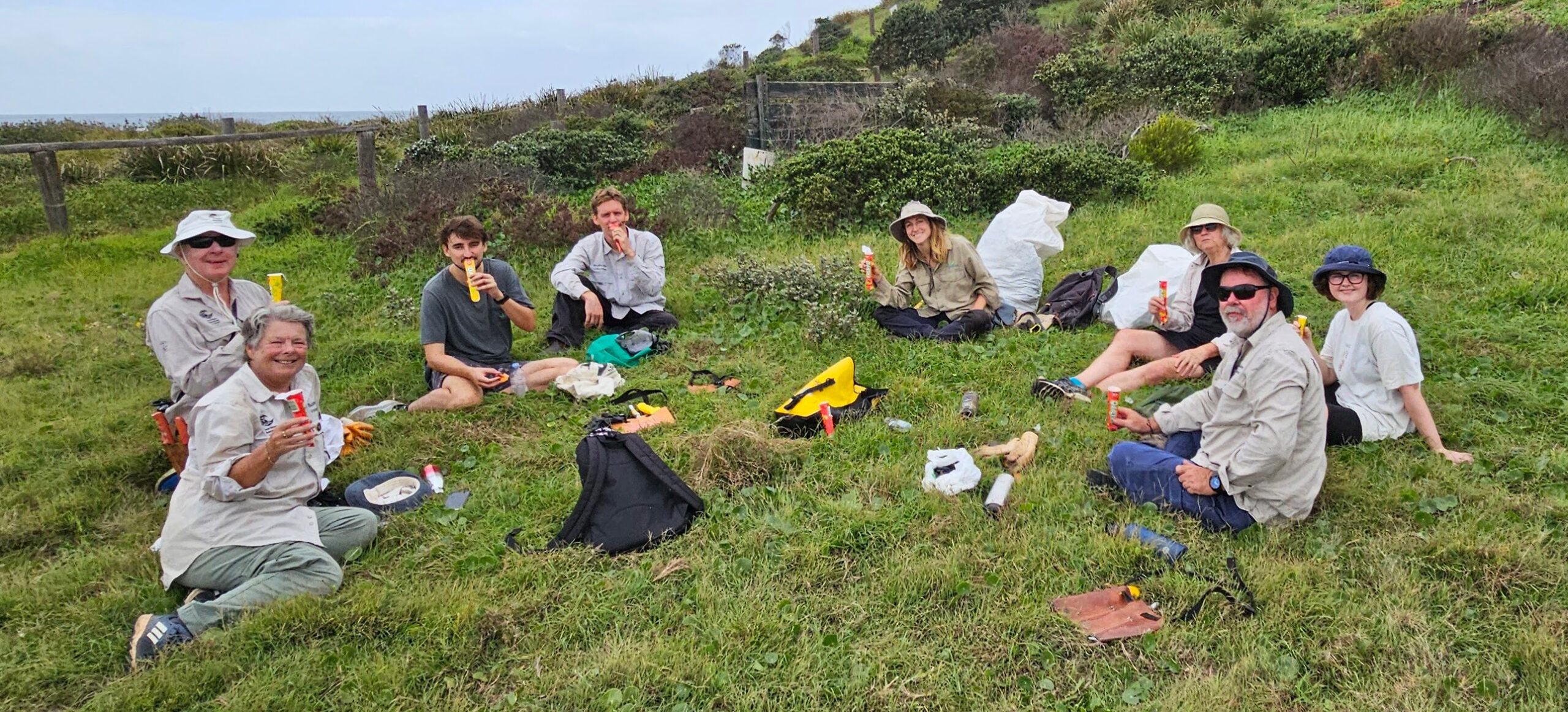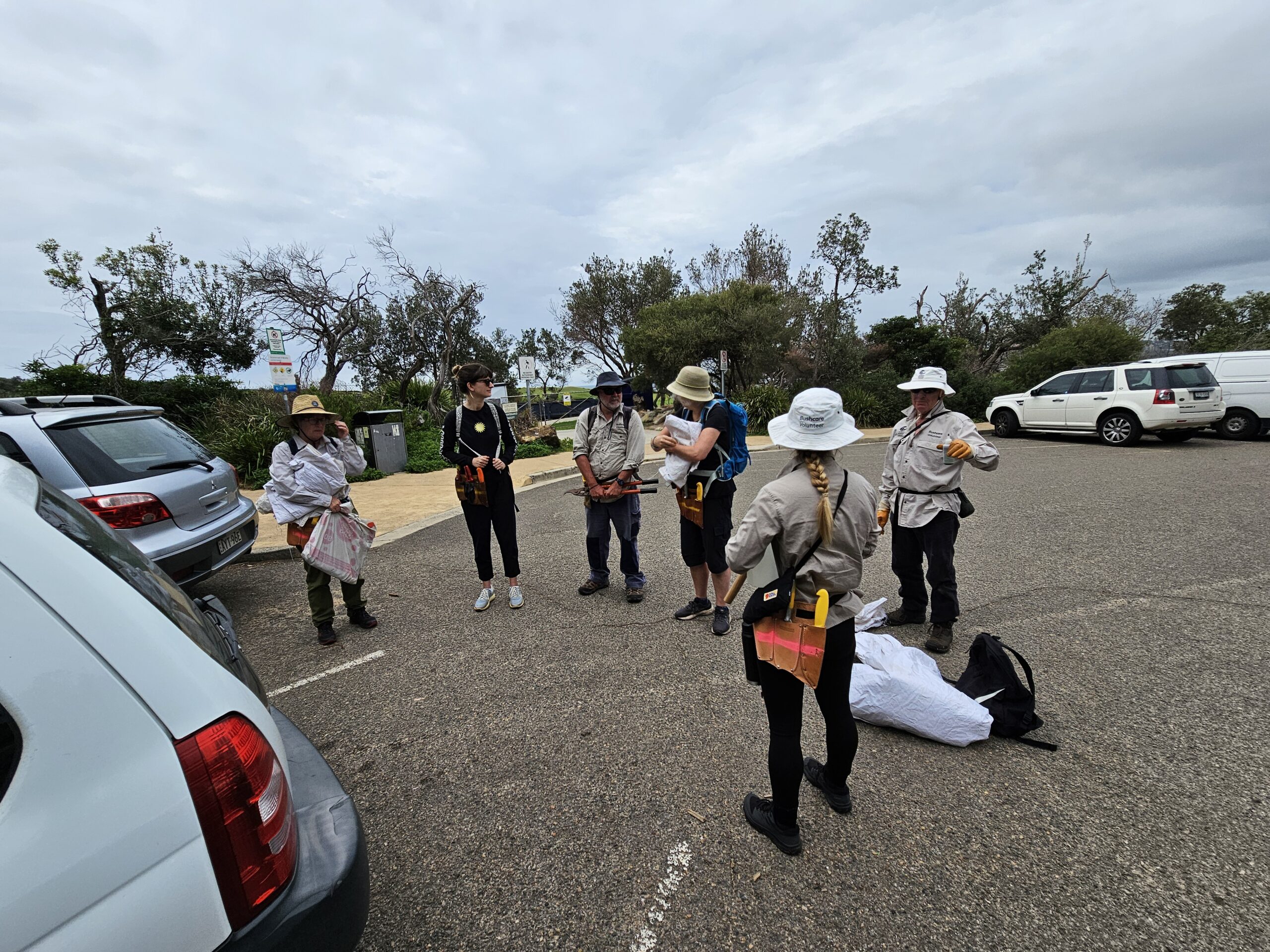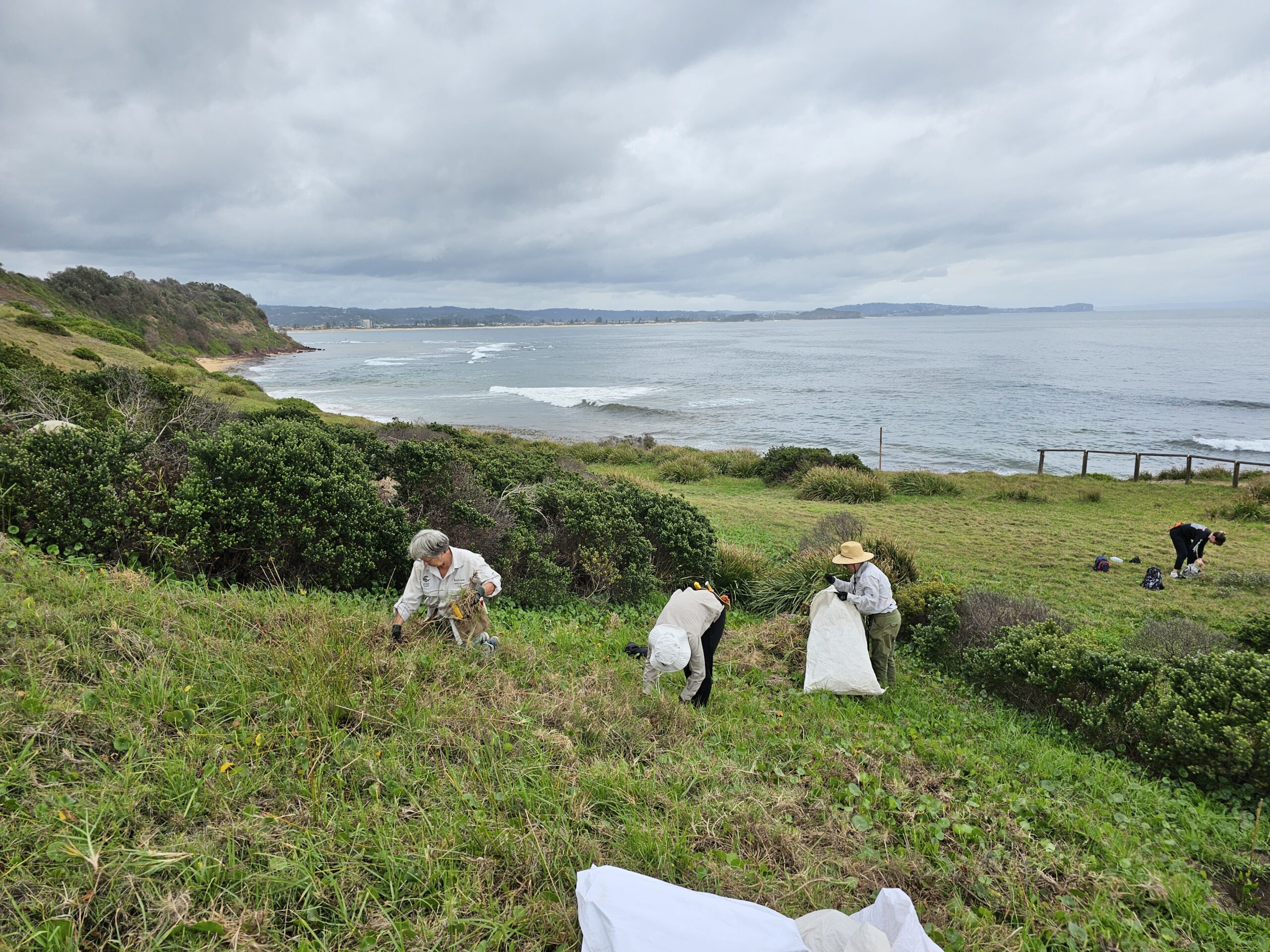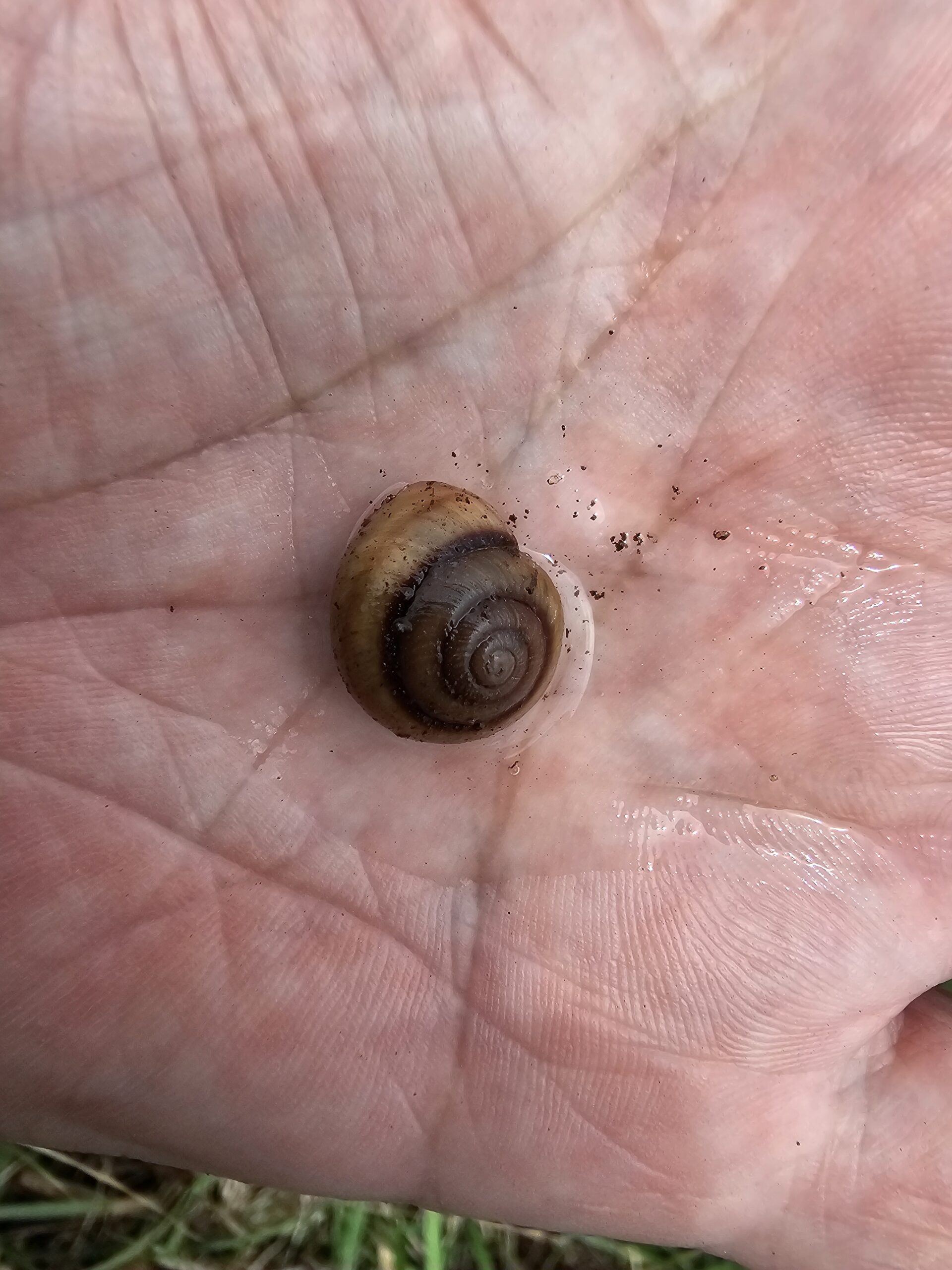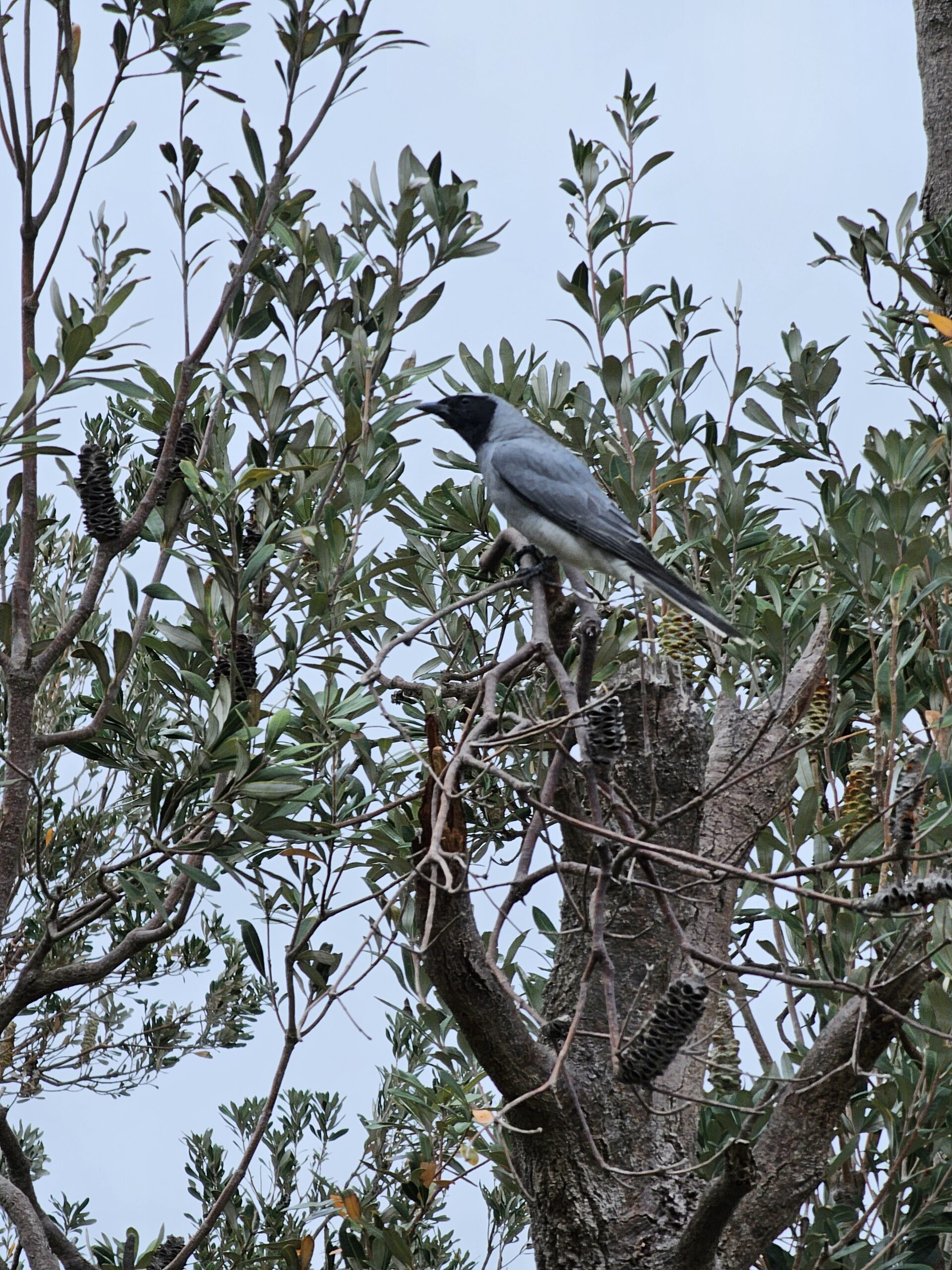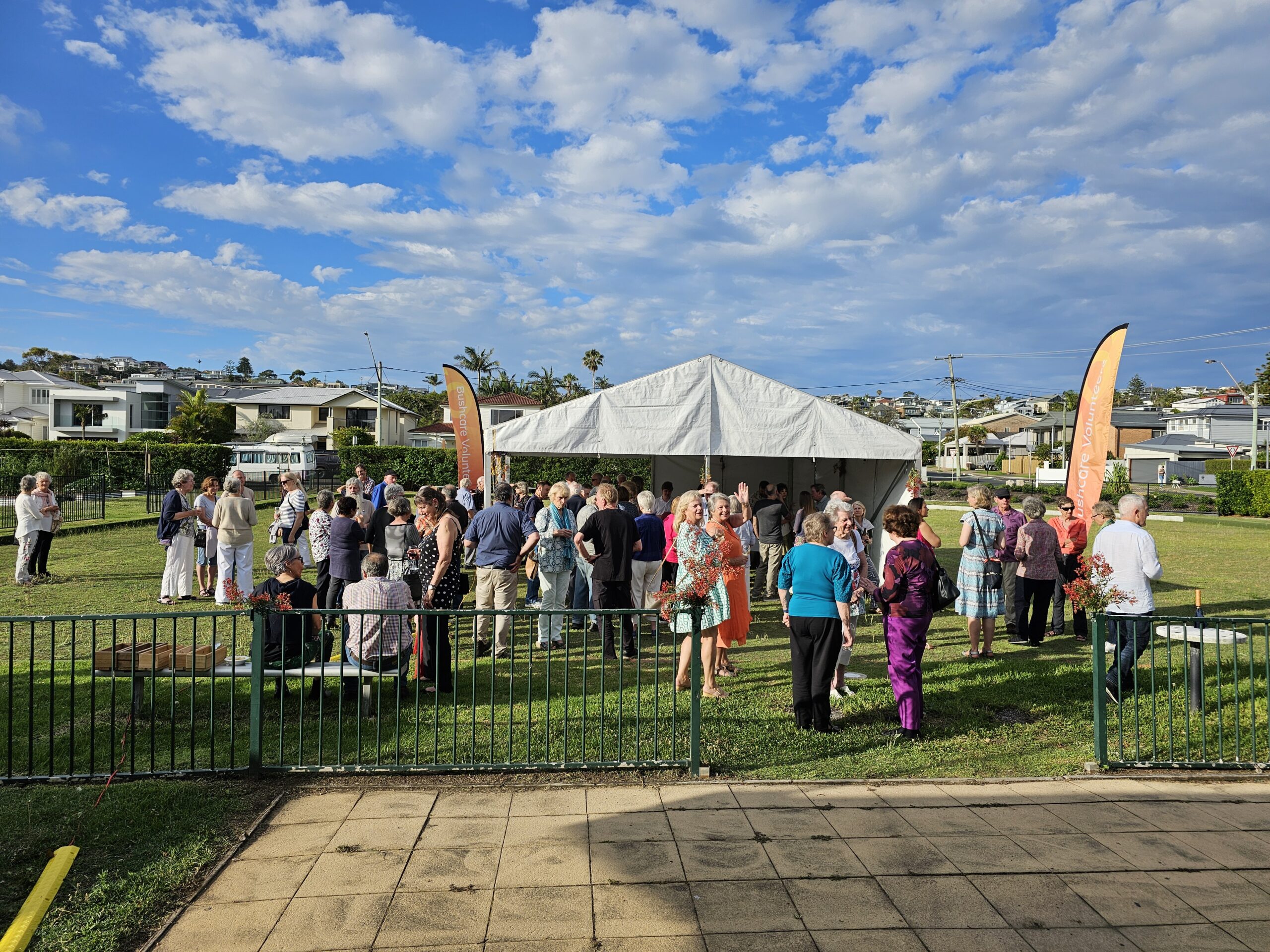Reefcare update for Saturday 2 March 2024
It was a warm muggy morning, without a breath of wind as the Long Reef Bushcare group assembled in the carpark. Unlike last month where the huge surf attracted lots of people, the hot, humid air and flat sea seems to have kept everyone at home. Except of course our dedicated bushcare team. But today was an exciting and important morning, for we were going to reap the rewards of all the weeding we have been doing over the past few months and plant some natives!
We gathered our tools and seedlings, allocated bottles of water and discussed our plan – start at the top and work down the slope, building terraces in which to place the seedlings, to help catch and retain water. In the exposed environment of salt and wind, the little seedlings will need all the help they can get.
It was all hands on deck as the enthusiastic group started planting the top slope. We first cut terraces in the sandy soil to help retain water, reinforcing the downslope side with sticks and bamboo stakes, before planting the seedling and providing plenty of water. Planting here is such a beautiful experience, with the ocean views and the sea breeze, with a murder of ravens on the wing overhead. Ivana did one of the first plantings, exhorting: “Live long and grow well!” to the little seedling before moving onto the next one, all the while being careful not to step on anything delicate.
With our first batch of plants firmly in the ground, we proceeded down the slope towards the gully, where Des and Clare prepared the ground for our new green residents.
The top of the gully area is looking really healthy, flush with the pink flowers and the lush green of the beach beans (Canavalia rosea). These were producing some huge beans now, some of the biggest we have ever seen.
We had a variety of plants for this area, to suit the varied terrain of steep slopes and flat sandy sections. Our trusty lomandras were first to go in, along with dianellas, which look quite similar to the uninitiated, and Kathy and Lisa showed us the subtle differences.
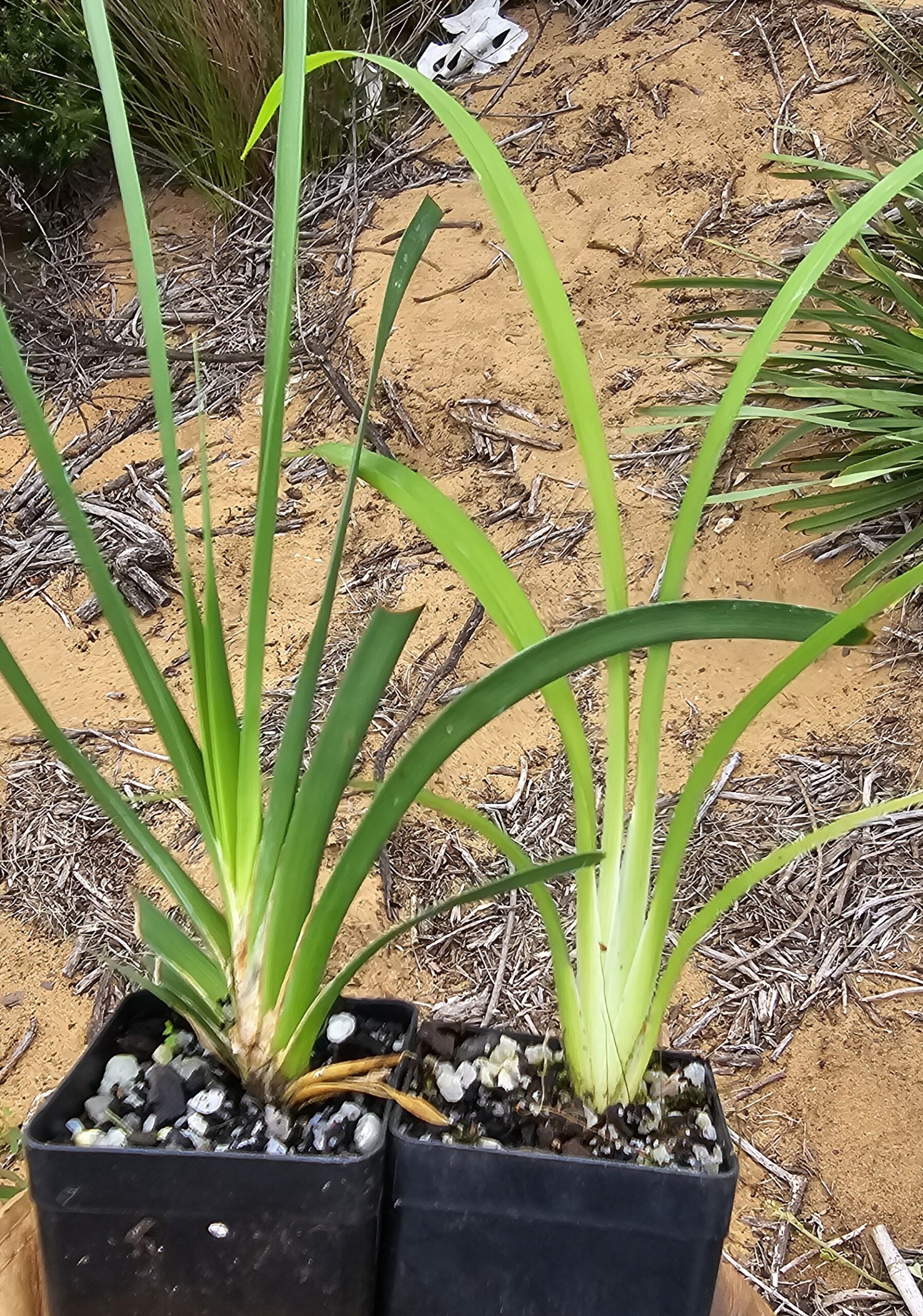
Lomandra on the left, with flat or v-shaped tips, and Dianella on the right, with pointed tips and a flat base.
At morning tea, we enjoyed the view and the fruit that Kathy had brought for us, along with Calippo ice-blocks to keep us cool.
After a nice rest and chat, we continued with our ongoing control of the non-native pigs face on the slope next to the gully, while Des worked on the weeds around the Correa alba shrubs higher on the slope. Alex got stuck into removing the pigs face, using a serrated saw to good effect to cut trenches across the slope. We used two techniques to deal with the cut pigs face, some of it being rolled into big tubes across the slope to control erosion, while some of it was thrown onto the uncut pigs face higher up the slope to reduce sun exposure and further challenge its growth.
Many species live in the vegetation on Long Reef, including animals that would not be expected in this often dry environment. This spider was thriving in the moisture laden vegetation that lies deep down near the soil.
As we continued to weed, the wind picked up and a short rainstorm passed overhead, the cool rain refreshing our little group and also providing some much needed water to our newly planted seedlings.
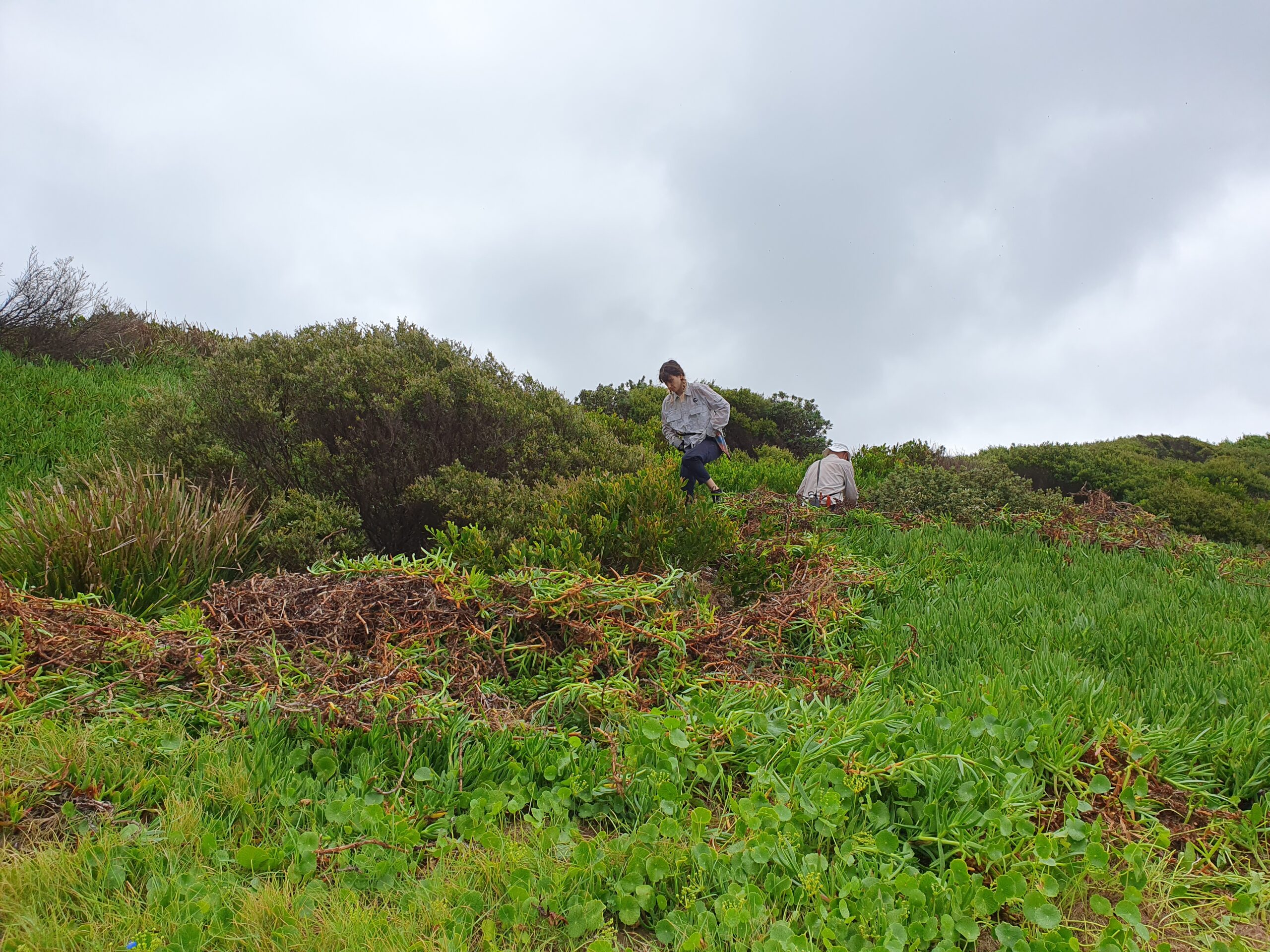
Des and Ivana remove pigs face along the fence. It is such a strong grower, it needs regular monitoring.
Meanwhile, Julie worked high on the slope above our heads, continuing with the process of keeping the asparagus ferns at bay, she collected a big bag full of tubers and berries by the end of the morning.
As the clock struck 12, everyone was so engrossed in work and invigorated by the cooler weather that we continued a little bit longer, before packing tools and heading back up the slope.
It was satisfying to see the empty seedling pots and we were well pleased about the amount of work we had achieved that morning.
Thanks to Julie, Lisa, Des, Kathy, Clare, Alex, John, Ivana for another lovely Reefcare morning.
Reefcare update for Saturday 3 February 2024
It was a warm overcast morning as the Reefcare group eagerly met for the first session of 2024. Today was forecast to be hot and humid, so we were well pleased to be greeted by a sea breeze and clouds to keep us cool. Also present was a huge ocean swell, which brought in surfers and onlookers, adding a vibe of energy and excitement to the morning.
Many bird spotters were also arriving, drawn by the presence of siberian sandpipers, ruddy turnstones and red-necked stints on the exposed foreshore. It seemed like Long Reef was the place to be this Saturday morning.
We were keen to start work before it got hotter, and keen to see how the site looked after the Christmas break.
As we walked down the track past the resident fairy-wrens, we spotted a blue-tongue lizard, basking in the open, seemingly unperturbed by all the birders, surfers, visitors, and bushcarers! We gently removed some asparagus fern nearby, without disturbing her morning sunbath.
Des, Brad, Merrilyn and Gen stayed on the high slopes as usual, tackling the asparagus fern and any new growth of Bitou, while Julie stayed on the fence line, removing the asparagus fern that was encroaching from higher ground. She also noticed that the asparagus ferns were dropping very small red berries, unlike the larger mature ones that are normally seen, and she did her best to collect these as well. Meanwhile, further down the slope, Lisa got to work on the fleabane, asthma-weed, and bidens before moving onto asparagus fern on the slope.
John and Alex were charged with inspecting the “nest” (an area surrounded by a ring of coastal rosemary). Armed with mattocks, they went to check on the turkey rhubarb infestation, which we had worked so hard to eradicate. The good news was that there were only two small rhubarb plants, which were easy to remove. Hoorah! The bad news was that the area had been taken over by blackberry nightshade, which was full of berries! Boo! So Lisa, John and Alex carefully removed these with an easy pull to the base of the plant and bagged the whole lot, trying to avoid dropping any berries. The rest of the area was looking good with Kennedia covering most of the nest.
Further down towards the sea are some very exposed and visible native Lomandras, that are infested with the noxious weed: turkey rhubarb. Previous attempts to remove it without damaging the Lomandras had failed. After wide consultation by Lisa, it was decided that glyphosate would be the best option, so our expert Kathy performed the scrape-and-paint operation, and also kindly showed other group members the technique.
The cooling breeze continued and by morning tea we took a well-earned break to catch up with what everyone had been doing over Christmas and New Year. We chatted about native bees, while enjoying Calippo ice-blocks which John kindly brought along and had kept in a bag of crushed ice under the Westringia. Paragliders sailed overhead, making the most of the onshore breeze, as did the usual ospreys, and even a pelican decided to do a bit of slope-soaring, gliding gracefully over us as we relaxed. Meanwhile, Brad examined a snail shell that Lisa had found near the track. It is a good chance that it is another specimen of the rare Maroubra woodland snail.
After morning tea, we continued working, as welcome swallows flitted around, picking up insects on the wing, and more paragliders arced overhead as the onshore breeze picked up. Kathy and Lisa removed non-native pigs face from the eastern dune and the top of the Southern hill, while Alex and Josh worked on the Western side of the site.
Thank you, Lisa, Des, Julie, Kathy, Brad, Merrilyn, Gen, Josh, Alex, and John – It was a productive and lovely morning.
Text and photos (unless otherwise attributed) by John Isles
Reefcare update for Saturday 2 December 2023
Merrilyn, Brad and Des all went back to last month’s task of removing some huge clumps of Asparagus fern along the fence line of the upper northern western slope, whilst John and Lawson (our Supervisor for this month) worked in The Nest removing remnant Turkey Rhubarb and moving onto removing Kikuyu so that we can plant in this area next autumn. Lisa, Denise, Claire and Ivana worked on removing Kikuyu between The Nest and where the contractors have cleared the site on the main slope and undertaken some considerable planting. Reefcare believe it would be great to clear the area in between of these two patches of Kikuyu and get a good weed free area from which we can then expand up and down the slope. Underneath the Kikuyu is some really good Themeda and amazingly a huge amount of Glycine, plus sometimes some Canavalia Rosea – this is an area seriously worth working on to save the existing native vegetation; the Glycine is doing to well.
At morning tea we enjoyed the mince tarts which Claire had kindly brought along – a lovely early Christmas celebration. We also discussed the recent meeting, Lisa, Julie, John and Kim had with Northern Beaches Council people, Michael Kneipp, Victoria Adair and Pamela Bateman about what is strategy with the remaining Bitou now that Reefcare are getting close to a very steep area, prone to erosion which has a lot of Bitou and would be just too dangerous to remove (on several fronts).
The current situation is that Reefcare will have to stop moving westward sometime next year with Bitou removal. With what to do next is under discussion between Reefcare and NBC, with the current thought to make sure that the tip moth is always prevalent to prevent the existing Bitou from seeding. After morning tea, Merrilyn, Des and Lawson worked on Asparagus fern, Lisa and Ivana worked on the eastern dunes making sure the demarcation line between the front dune and back was being maintained – which is to stop the kikuyu getting to the fore dunes and the non-native pigs face getting to the back dune. The area which was removed last month on the eastern dune of the non-native pigs face is well covered with the remanent dead non-native pigs face and a native creeper. And it was here that Ivana found the Mattock which was lost last month!
Claire, Denise and Maria continued to work on the Kikuyu between The Nest and the planting undertaken by Council’s contractor – Toolajooa
Text by Lisa Calder.

